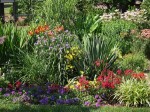 When spring comes and the urge to buy seeds and plants envelops the gardener, one of the first things to consider is the life cycle of the plant involved; is it an annual, perennial or biennial? Knowing the answer to this question will help you determine how long the plant will add interest to your garden and may also decide how much you want to spend on the plant and whether you want to buy seed, a six-pack of seedlings, or an established plant.
When spring comes and the urge to buy seeds and plants envelops the gardener, one of the first things to consider is the life cycle of the plant involved; is it an annual, perennial or biennial? Knowing the answer to this question will help you determine how long the plant will add interest to your garden and may also decide how much you want to spend on the plant and whether you want to buy seed, a six-pack of seedlings, or an established plant.
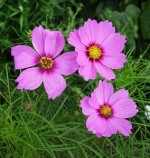 Annuals are plants that complete their life cycle within a year; they usually germinate, flower and die in one year, with only the seeds going on from one year to the next. Since they complete their life cycle in one year you will have flowers and mature foliage in the garden relatively quickly. Bringing annuals indoors for the winter will not help; their life span is no longer than one year. Examples of annuals include marigolds, cosmos, beebalm, and zinnias.
Annuals are plants that complete their life cycle within a year; they usually germinate, flower and die in one year, with only the seeds going on from one year to the next. Since they complete their life cycle in one year you will have flowers and mature foliage in the garden relatively quickly. Bringing annuals indoors for the winter will not help; their life span is no longer than one year. Examples of annuals include marigolds, cosmos, beebalm, and zinnias.
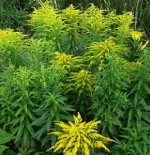 Perennials are plants that need at least two years to complete their first life cycle. They usually germinate and produce vegetative growth the first year, and then in the second and subsequent years produce flowers and seeds. Perennials usually either go dormant or die down in areas where winter temperatures are cold. Examples of herbaceous perennials are garden phlox, golden rod, and daylilies.
Perennials are plants that need at least two years to complete their first life cycle. They usually germinate and produce vegetative growth the first year, and then in the second and subsequent years produce flowers and seeds. Perennials usually either go dormant or die down in areas where winter temperatures are cold. Examples of herbaceous perennials are garden phlox, golden rod, and daylilies.
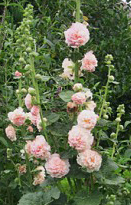 Biennials are plants that complete their life cycles in two years. They germinate and produce some vegetative growth in their first year; in their second year they produce more vegetative growth, flowers, and seeds, and then die. Examples include many hollyhocks, Sweet William, and parsley.
Biennials are plants that complete their life cycles in two years. They germinate and produce some vegetative growth in their first year; in their second year they produce more vegetative growth, flowers, and seeds, and then die. Examples include many hollyhocks, Sweet William, and parsley.
What is the significance of these life cycles to the gardener? If you want immediate color in your garden from seeds, annuals are your best choice. Annuals in six-packs are more expensive than seeds but usually much less expensive than perennial seedlings. You have to accept the fact that the annuals will probably have to be replaced next year but they will give you a lot of color quickly at a reasonable price. True some, like zinnias, will seed themselves but you can’t count on them to do this or on the appearance of their offspring. If you want immediate color from biennials or perennials you will have to buy, older (and more expensive) plants that have already gone through their first season in a nursery and are ready for their performance in your garden.
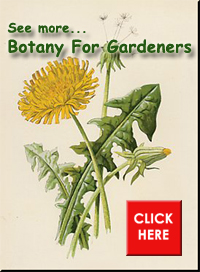 Starting biennials and perennials from seed is very cost effective but takes more effort and space. You need some place to grow the small plants until they are large enough to contribute to your garden in their second year. Perennials are well worth the effort and space but biennials require the same expenditure in time and space but will die after their 2nd year and will have to be replaced. Well worth it if you like hollyhocks!
Starting biennials and perennials from seed is very cost effective but takes more effort and space. You need some place to grow the small plants until they are large enough to contribute to your garden in their second year. Perennials are well worth the effort and space but biennials require the same expenditure in time and space but will die after their 2nd year and will have to be replaced. Well worth it if you like hollyhocks!
[…] What is the Difference Between an Annual, Perennial, or Biennial? […]